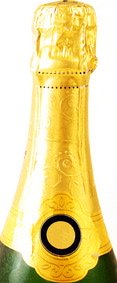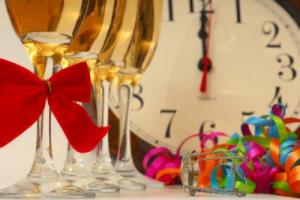|
Types of Champagne and Sparkling Wine, Let The Giggles Begin!Why is it that we are so intrigued by the different types of champagne and other sparkling wines? Is it the bubbles? Is it the mystery of how those bubbles come about? Is it the tickling sensation? Perhaps all of the above and then some. We tend to call champagne any wine that is bubbly. In fact Champagne is a wine, bubbly yes, but made in the French region of Champagne. Though winemakers located in regions outside of France have called their sparkling wines "champagne", only wines from that particular French region can be types of Champagne. The grapes used in Champagne and other sparkling wines are Pinot Noir, Chardonnay, and Pinot Meunier. In France, the region of Champagne is in the north of the country, an area that has cooler weather. The grapes are picked at a time when their acidity is high. This gives the wine its delicious tangy flavor. The region of Champagne is divided into four areas: The Mountain of Reims The Valley of the Marne Cote des Blancs Cote des Bar The three major types of Champagne are: Prestige Cuvée: made from grapes of a single vintage, and the wine requires longer aging. Vintage: made from a single vintage. Non-Vintage: made from a blend of two or more harvest years. 
The Rest of the WorldThe rest of the world makes sparkling wine, rather than Champagne, but many winemakers use the "Methode Champenoise" to make theirs. In this method of winemaking the grapes are only twice. Prestige Cuvée is made from the first pressing. After the pressing comes fermentation. The First Fermentation produces still wine, and lasts about two or three weeks. Then comes the Blending. Here is where the winemaker earns his or her keep. It really takes great knowledge and instincts to know which grapes, from which harvest, from which village or region would make the best wine. After blending comes the Second Fermentation. At this point the winemaker adds the Liqueur de Tirage to start this fermentation. The liqueur the tirage is a blend of sugar and yeast. This fermentation produces the carbon dioxide that makes the distinctive bubbles. At the start of the second fermentation the wine is placed in its permanent bottle, though it will have a temporary cap. Aging is a very important step in the process. The second fermentation produces sediment that plays a crucial part in the aging. The quality of the wine will be determined by the length of time that it spent aging with the sediment.
But how do you get rid of the sediment without losing the bubbles? By a process called Riddling. In this process the bottles are placed in special racks with the neck of the bottle down. Gravity does it job by letting the sediment settle in the neck of the bottle. The bottles are given a slight turned by hand in order to coax the sediment into settling into the neck, though some winemakers do this by mechanical means. After about eight weeks, and many many slight turns, all the sediment has accumulated in the neck, and it is now time to get rid of it. This is done by After the dosage is added the bottle is Recorked with its distinctive cork and wire fastening. Sparkling wine and Champagne should be drunk right after you buy it. Non vintage champaign can be kept for about three years, while vintage and prestige cuvée can be kept about fifteen years at most. So, Go Ahead. Enjoy That Bottle You Have Been Saving!Returns to Types of Wine from Types of Champagne Return to Home Page from Types of Champagne
|






